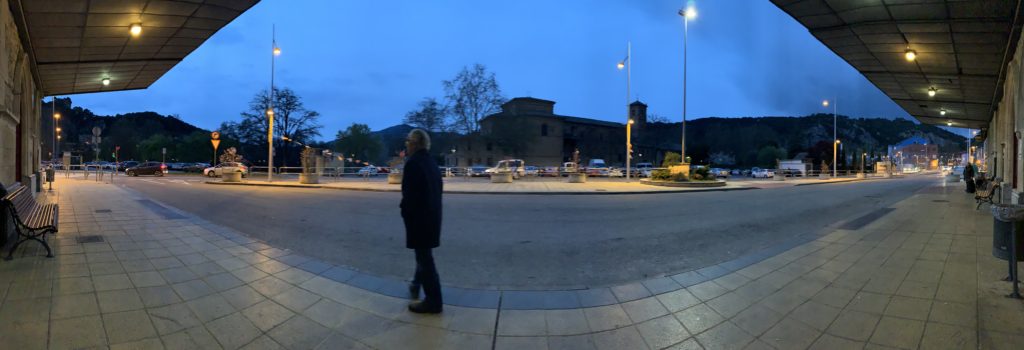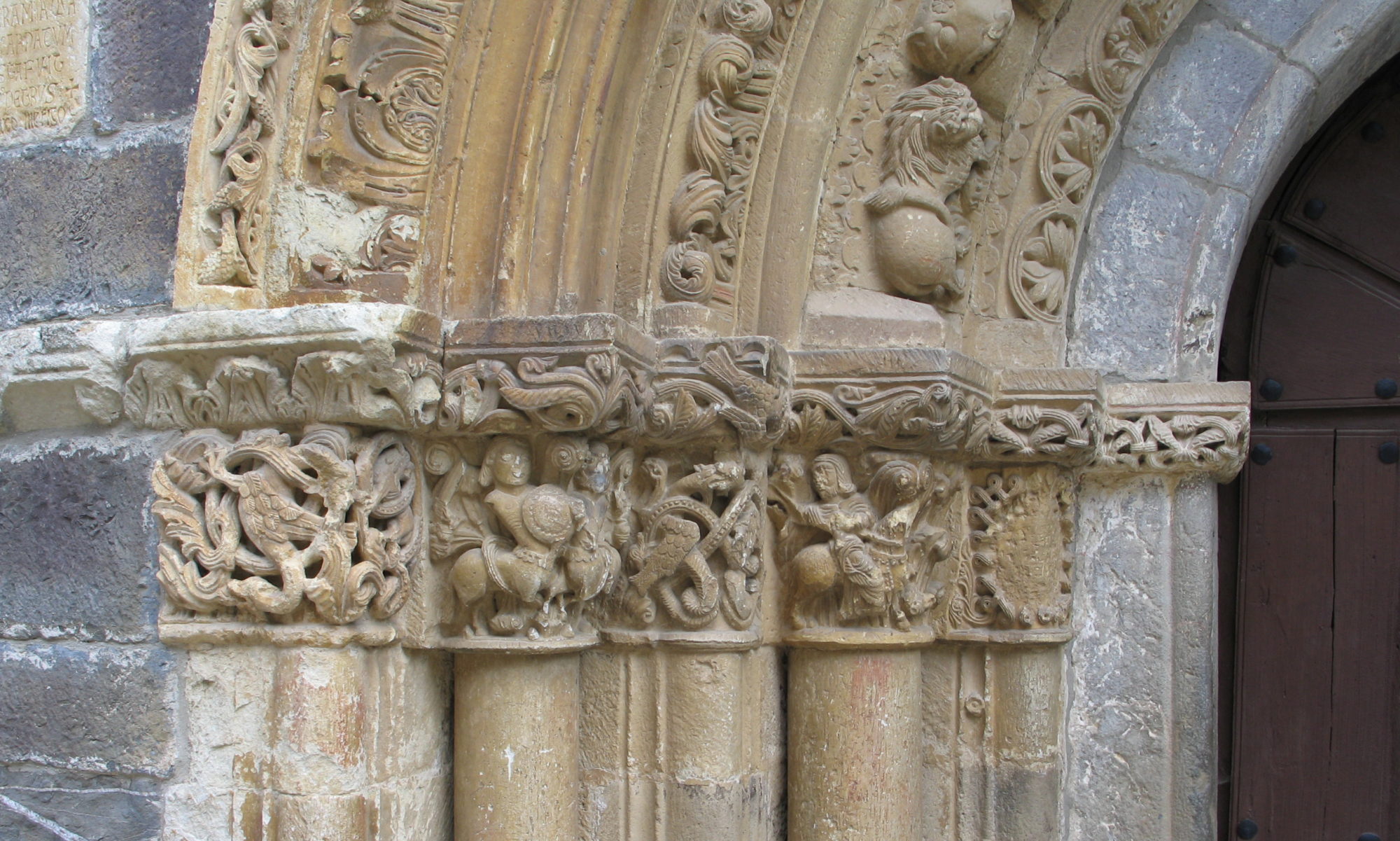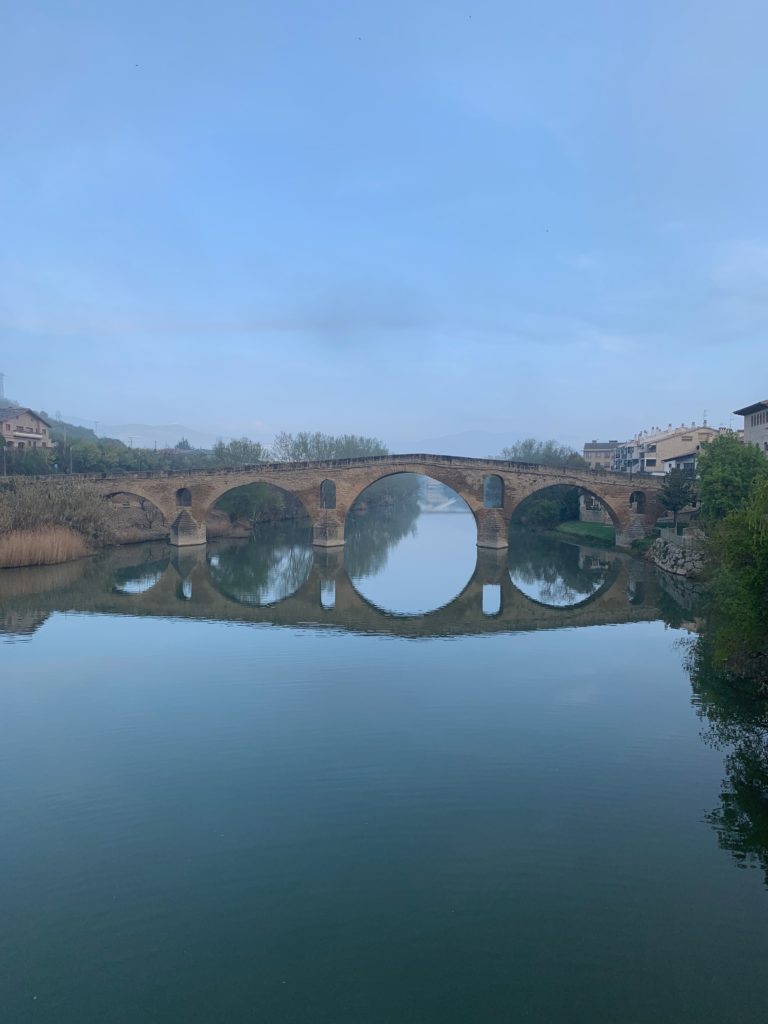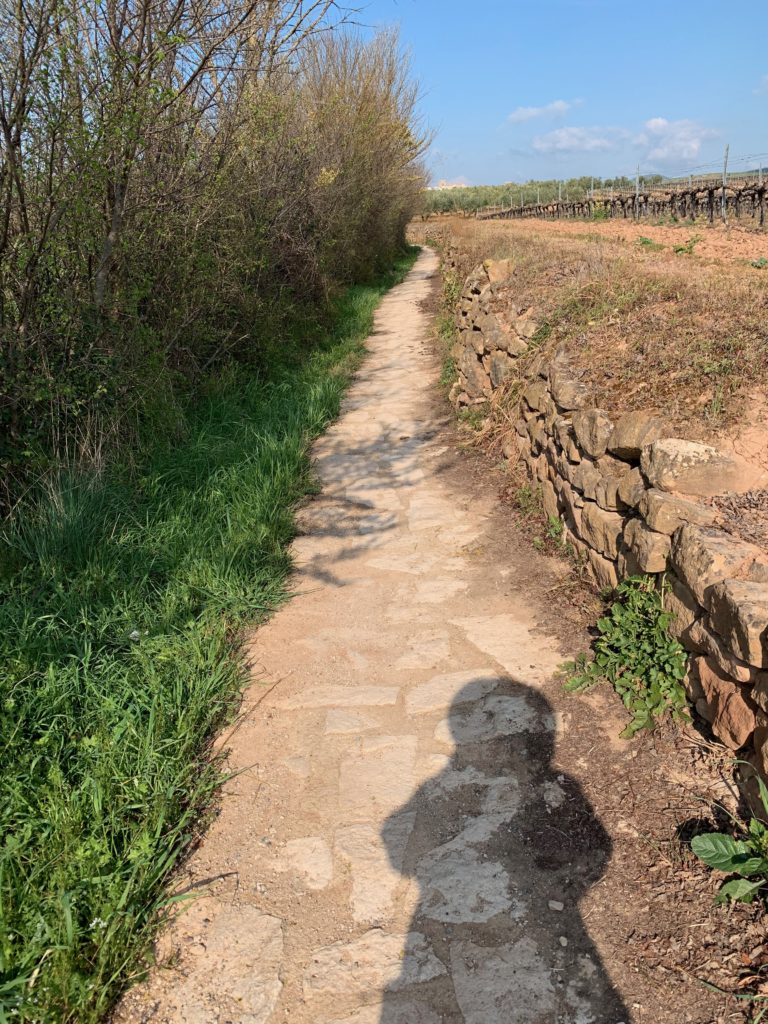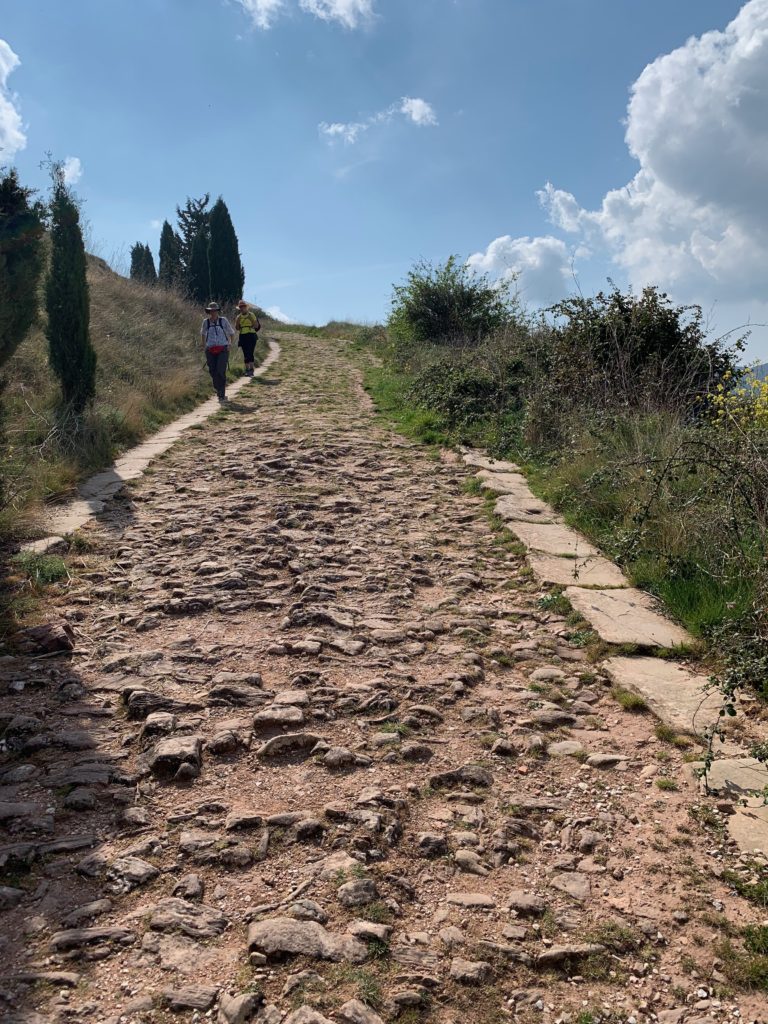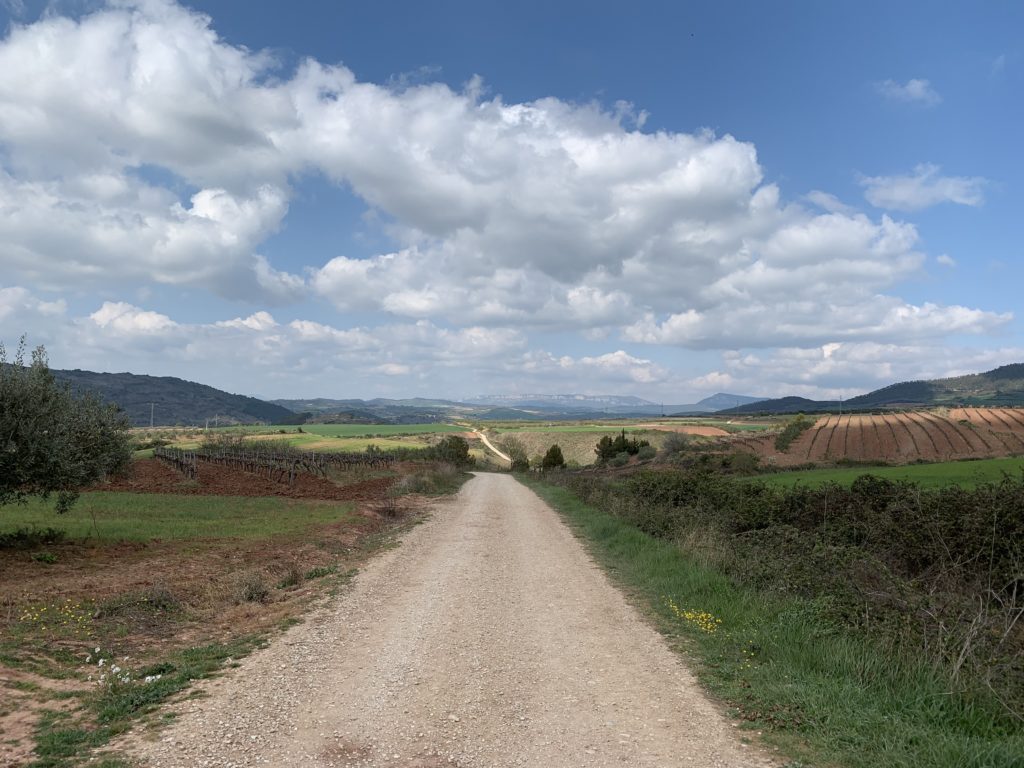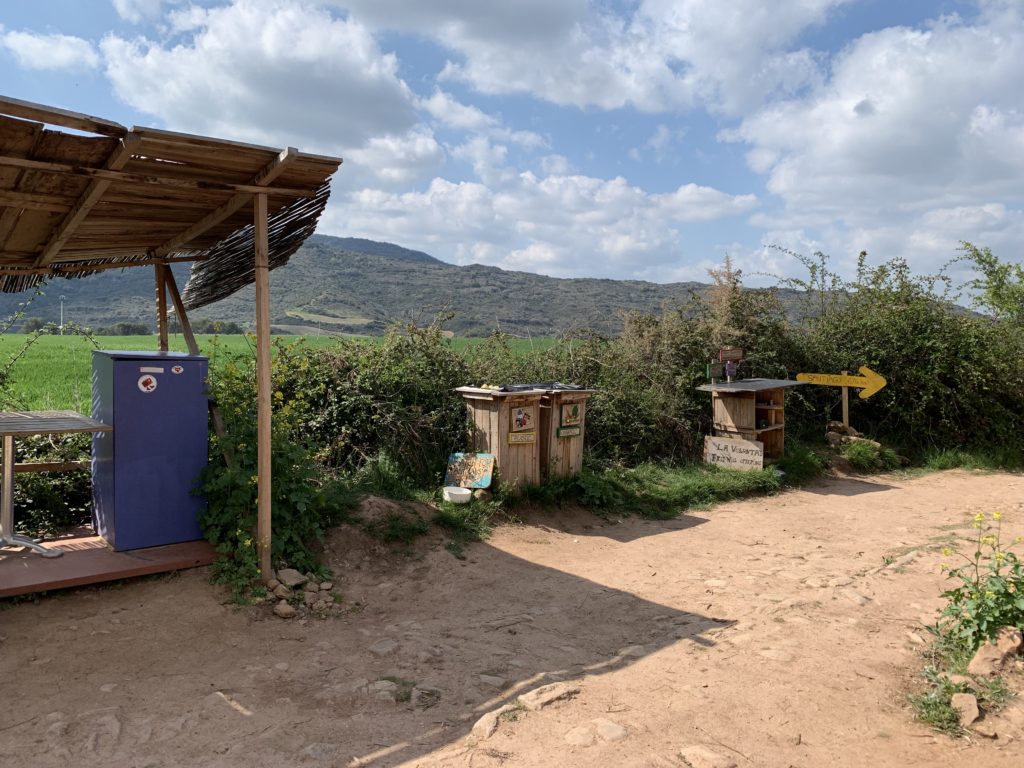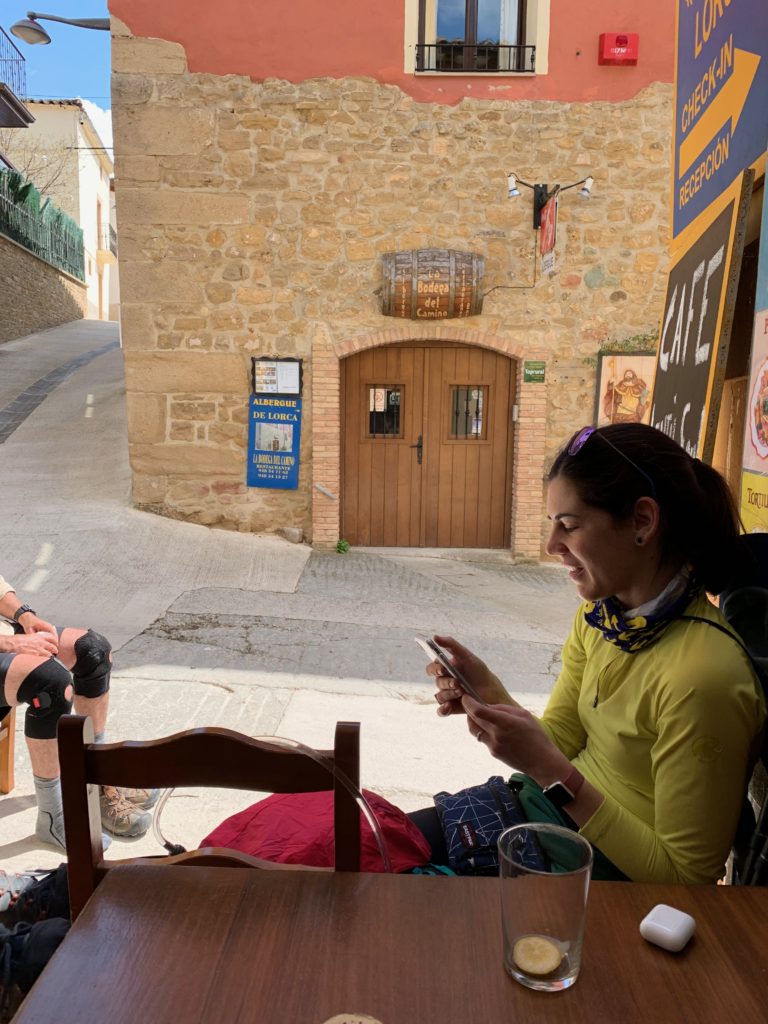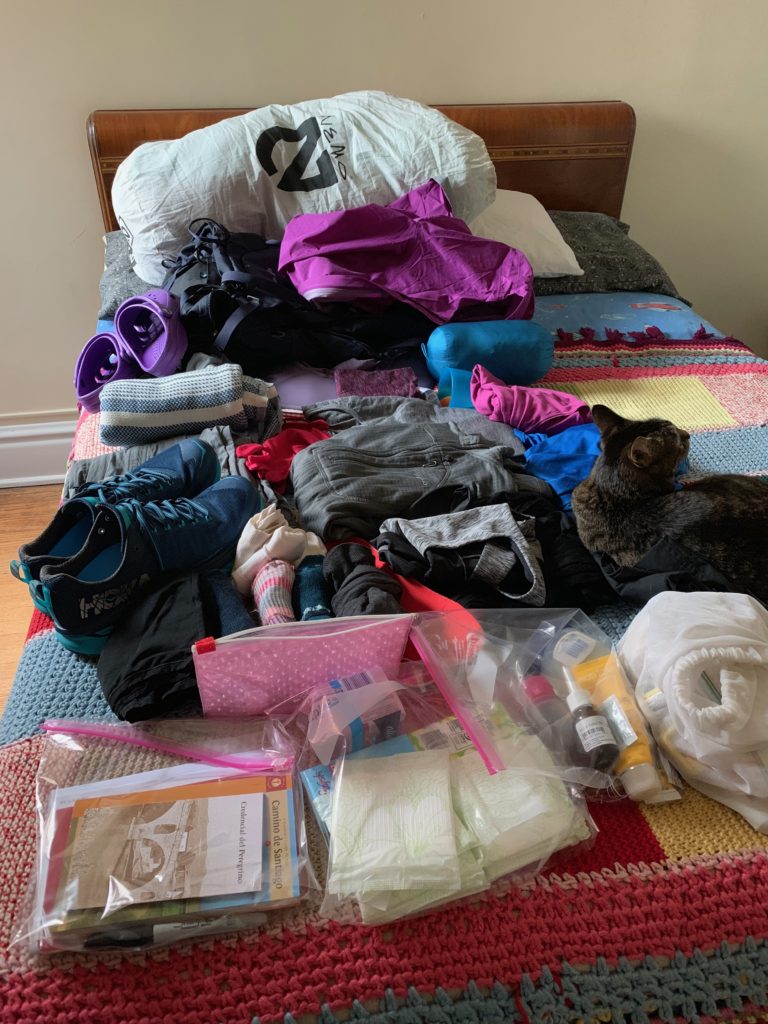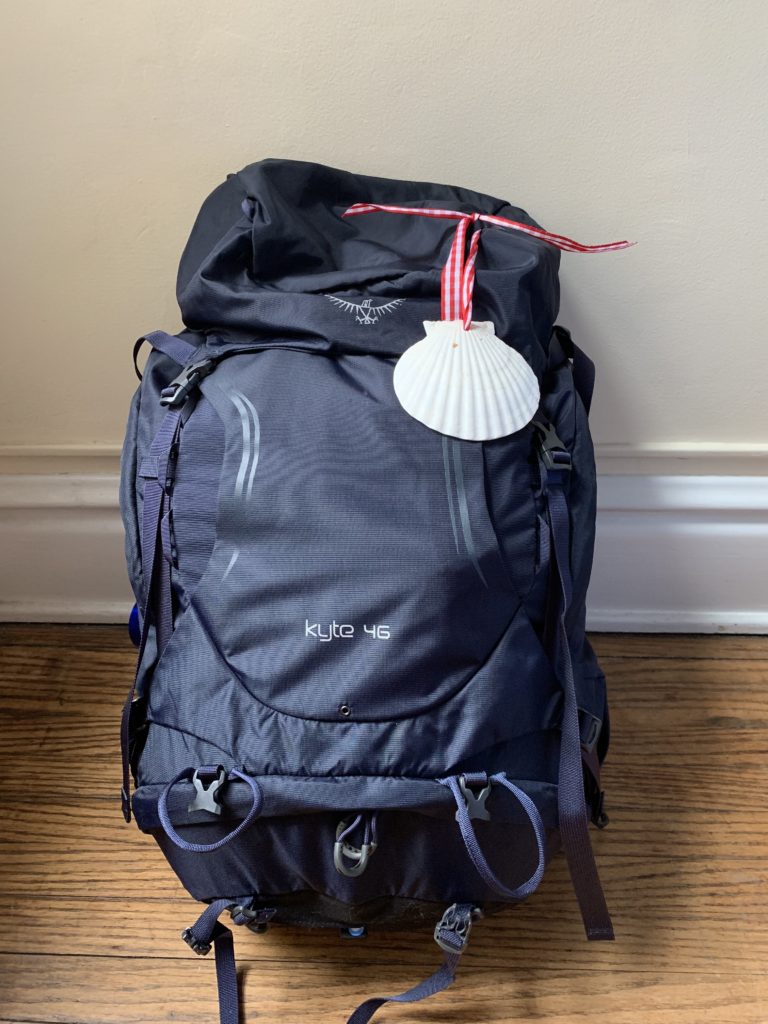It was lucky and maybe surprising that I liked Estella so much, given that this was my view of it for most of the time I was there:
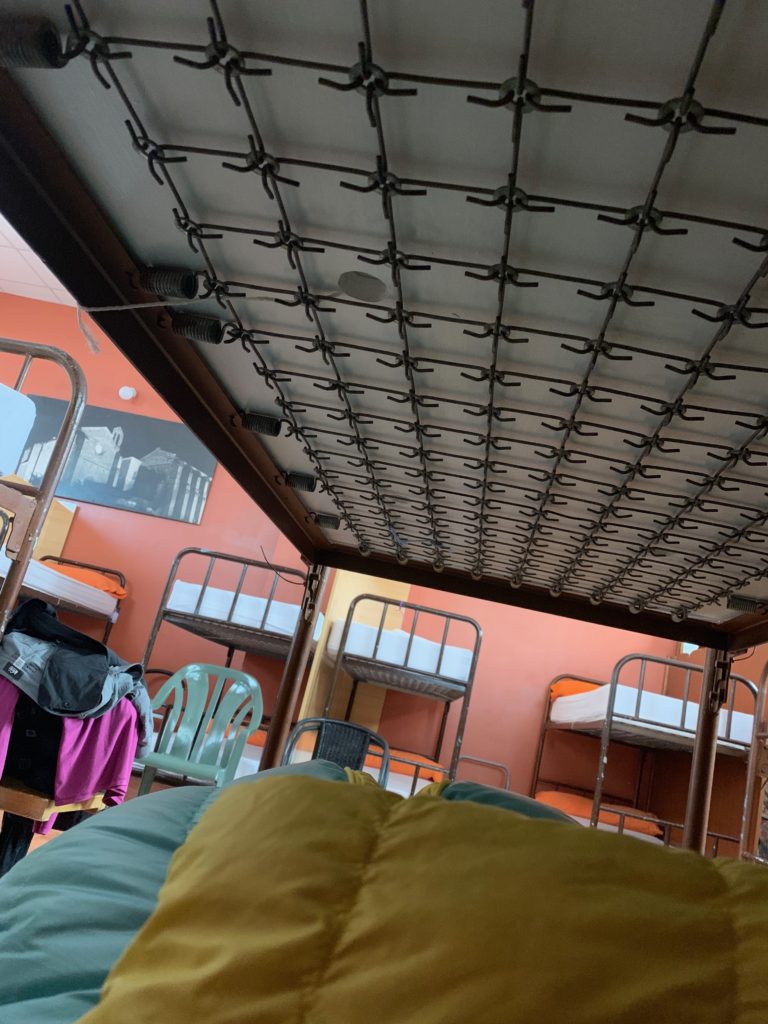
But Estella is lovely. Imagine the shell of a soft boiled egg once you’ve knocked the top off, leaving the sides jagged and craggy, and after you’ve eaten the egg out of it. Now imagine a town nestled in the bottom of the shell, with a river twisting through it.
In the Middle Ages, there were castles on many of these hills, protecting the town, which was founded in 1090 by King Sancho Ram irez of Navarre by annexing the fortified Basque settlement of Lizarra. The king’s plan was to move the main road, which is also the pilgrimage road to Compostela, out of the difficult hills above, so it could run more easily down through the flat. He encouraged settlers from France and also Jews to come live there, and they did, settling in what became three adjacent walled communities, and creating an important trading hub.
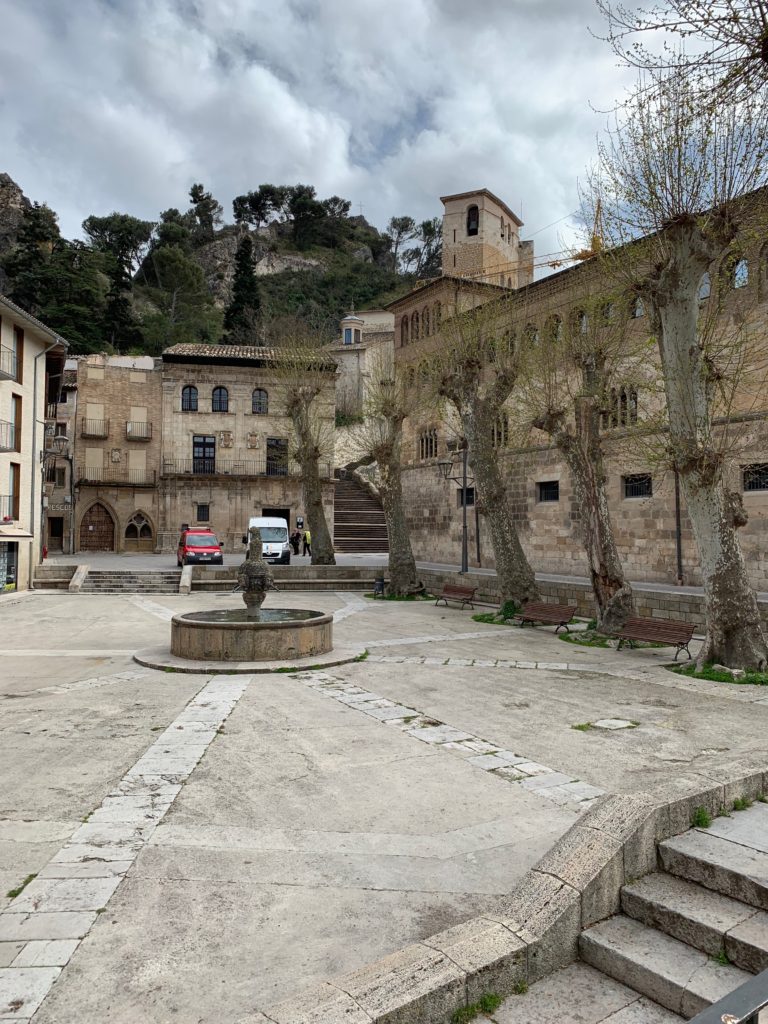
I got a strong sense of that medieval city, especially on the side of the river where my albergue was, right on the pilgrimage road, underneath the old Jewish quarter, pressed up against the hill. In the photo above, the Camino is the street that runs behind those two cars. The ground floors of many of the buildings that run along it are very old, even medieval, as you can see from the two behind those cars. To the right is the palace of the Navarrese kings, whose first floor dates to the late twelfth century, a rare example of civic Romanesque architecture. More on that soon. In the background to the right, the tall tower you can see belongs to the church of San Pedro de la Rua. Above it, on the hill, was one of the castles I mentioned, and when it was destroyed by the Castilians in 1572 in their war against Navarre, it fell on the twelfth-century cloister of the church, destroying half of it. I wasn’t able to get into the church or cloister (hello, Spain, and churches that are not open when they say they will be) but I did use some of my strength to climb the many steps up to the facade. It was worth it.
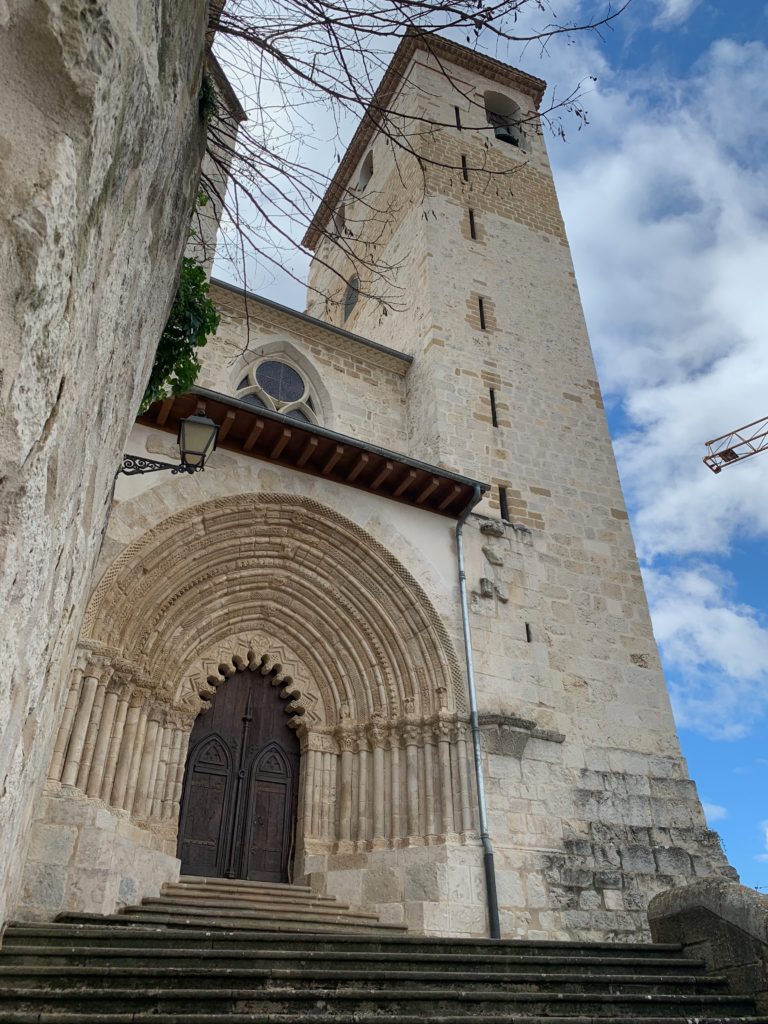
You can see it is as much fortress as church. Estella has been on one frontier or another during most of its existence, most recently in the nineteenth century, during the Carlist Wars.
I think when most of us look at a building like this, we think things like “Gothic” “French” “European”. Maybe that polylobed arch gives some of us pause. Pilgrims will have seen one very like it walking through Cirauqui earlier that day, but others might think more of buildings that look like this:

This is the Tin Mal mosque, in Morocco, built to commemorate the Almohad leader Ibn Tumart in 1156, four years before Notre Dame was started in Paris and a few decades before San Pedro de la Rua was constructed. The Almohad Empire extended from Africa through the southern half of Spain at this time.
Look closer at some of the figures on the portal, like these two facing griffins. See the detail still preserved on their wings, and what looks like maybe traces of paint.

Compare it to this silk roundel originally wrapped around the relics of Saint Siviard and now in the treasury of Sens.
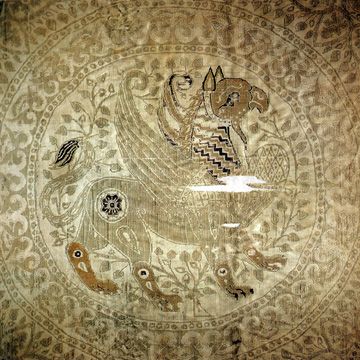
Imagine what it would have looked like if the portal had all been painted. Not the somewhat austere, stern, pure stone we see today but a riot of colour, more like a series of silk textile borders. I also like the little stone guys on thrones. I’ve never seen that before.
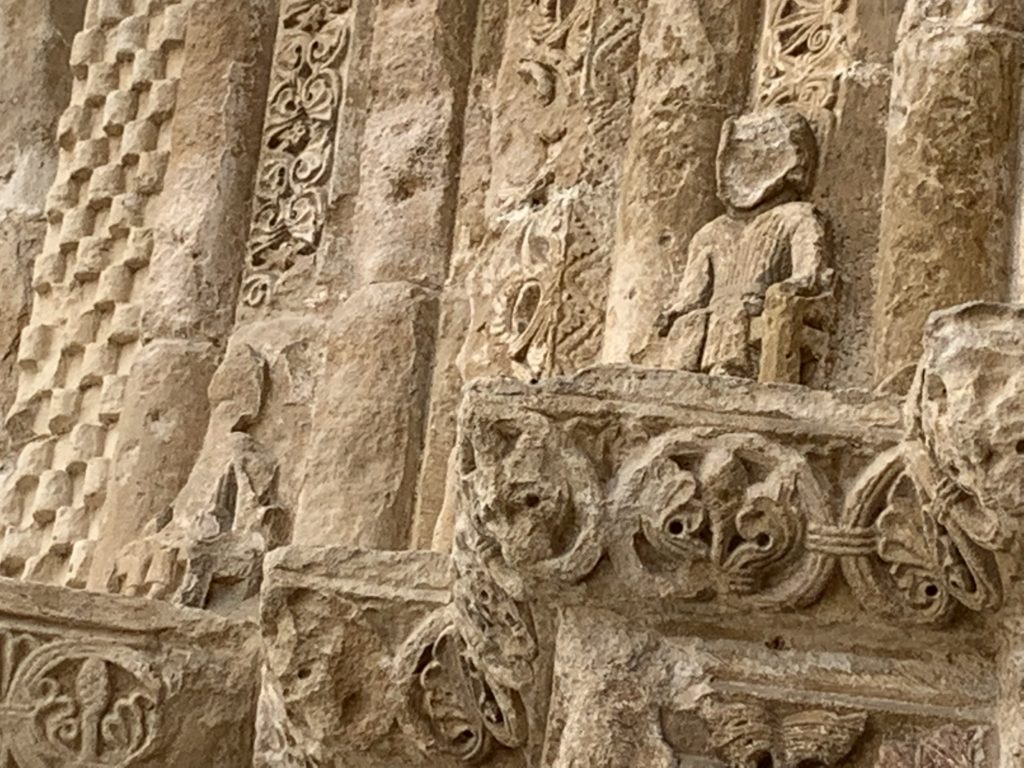
It’s not a church, but the Romanesque palace has some interesting sculpture too.
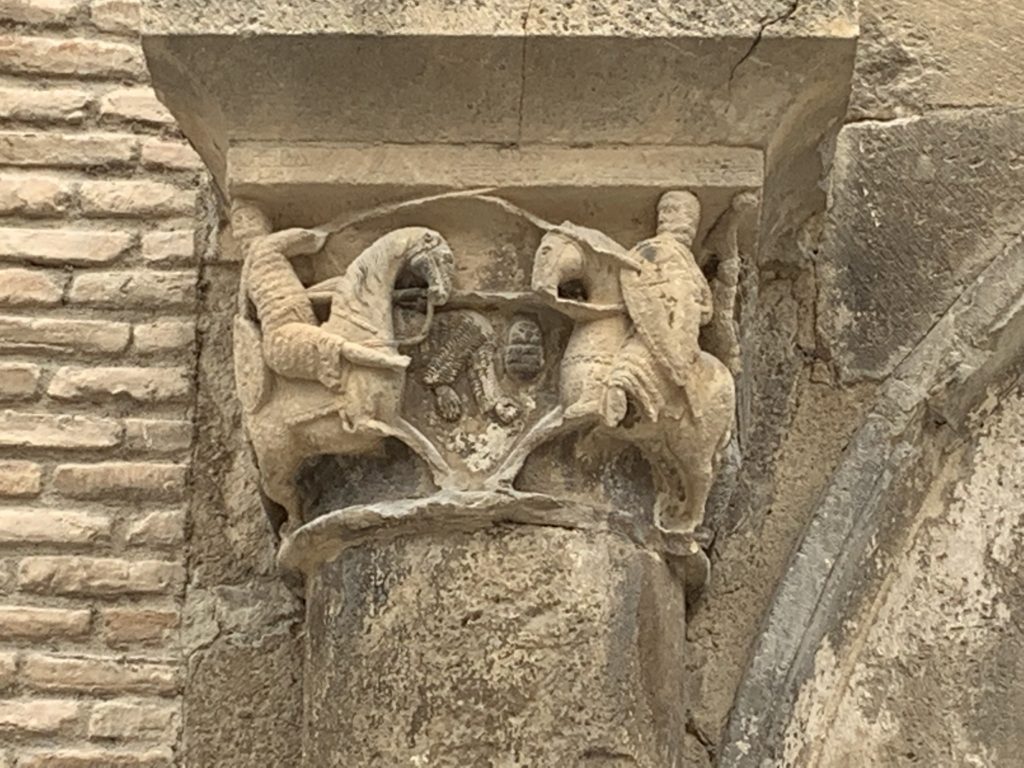
This capital shows Roland fighting against the giant Ferragut, part of the tale of Charlemagne in Spain found in the Pseudo-Turpin chronicle. Their battle supposedly took place outside Nájera, a few days further on the pilgrimage road.
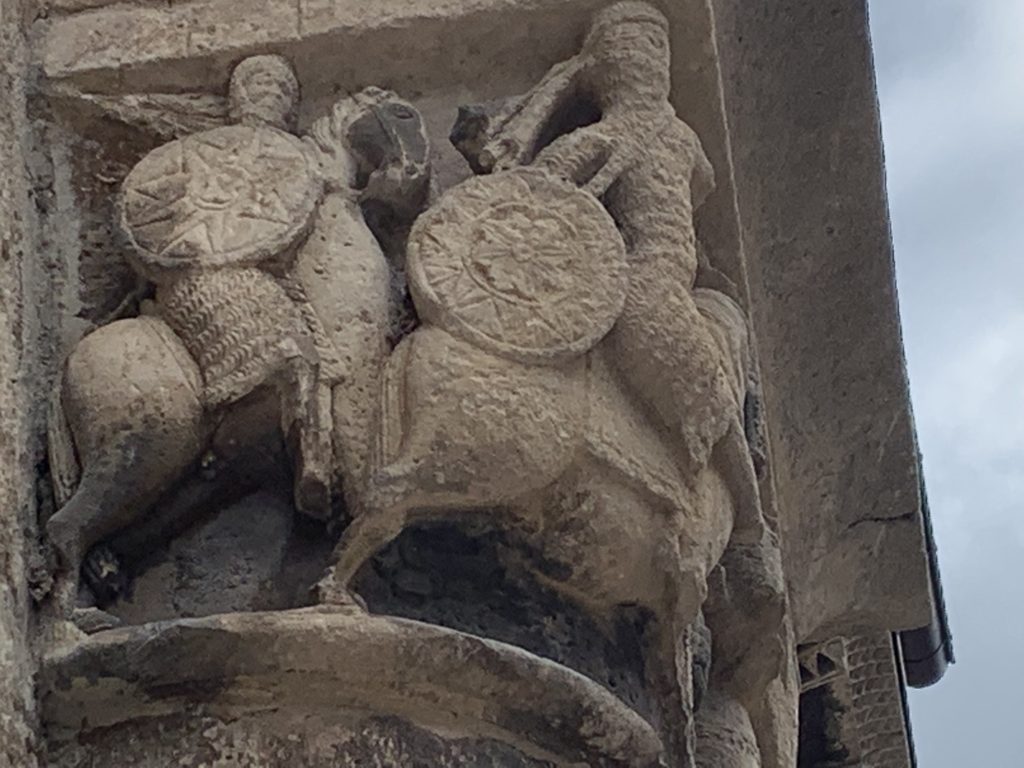
I love the detail you can see here on their shields and their chainmail.

Here is Ferragut himself. Evidently he and Roland paused their fight many times, to discuss the finer points of their theological differences.
But I had other reasons to be interested in Estella. This town, like many others on the pilgrimage road to Compostela, had an important Jewish community throughout the Middle Ages, and when I wrote Pilgrimage, my historical novel about the twelfth-century Camino, I set an important scene among the Jews of Estella. If you have read the novel, it is the moment when Gebirga is travelling with Yusuf, a Mozarabic Christian, and two Jewish traders. They stay with a Jewish family in Estella over Shabbat, much to Gebirga’s discomfort. That evening, their prayers are interrupted by news that their slaughterhouse, down by the river, was on fire. They confront a Christian mob, whose leader tells them a story of seeing a Jew throw a crucifix into the river. At that very moment, he says, the Jewish slaughterhouse caught on fire. When asked who it was he saw, the ringleader points to Yusuf who takes to his heels. Half the mob follows him, and a brawl erupts between the other half and the Jews. It ends in a draw, but Yusuf remains missing.
When I came to Estella, I wanted to see how well what I had invented matched what was there. I based many features of this episode on stories about the Jews of Estella, including a story that the Jewish women of Estella had their own synagogue, and the anti-Semitic legend of the Jew throwing a crucifix in the river. My source for a lot of my knowledge about Jewish communities along the Camino is David Gitlitz and Linda Davidson’s wonderful The Pilgrimage Road to Santiago: The Complete Cultural Handbook
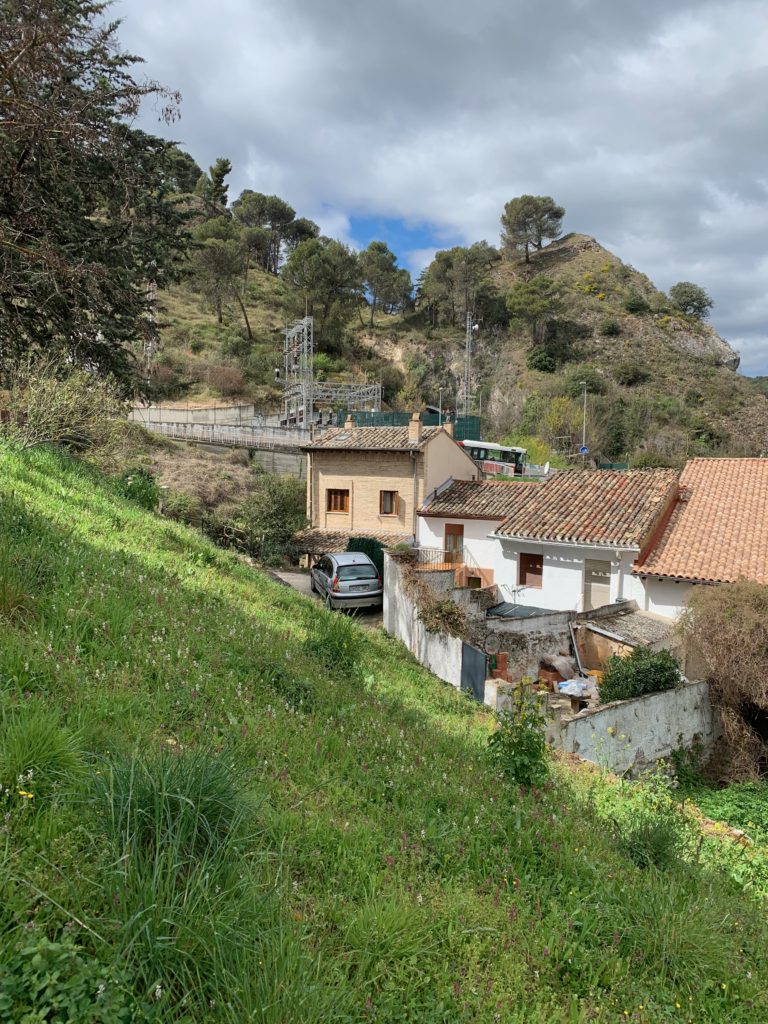
The Jews of Estella were moved around during the four hundred years they lived in Estella, but when Gebirga would have stayed with them, around 1120, their community was on the hillside above the pilgrimage road and the river, up behind the albergue where I was staying. You can see a few house here in the photo, but much of the area is open, and occupied by a bypass highway, just out of sight beyond these houses. Its emptiness makes it easier to remember and imagine the lost community, easier for me than in Toledo or Barcelona.
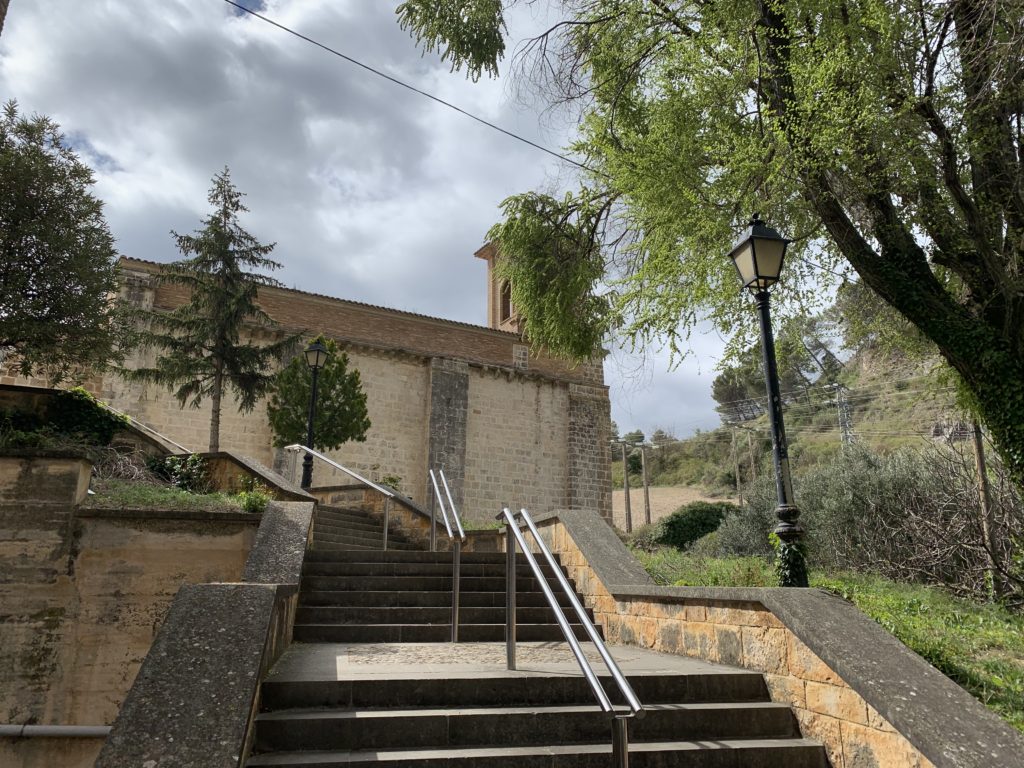
The church of Santa Maria, here, was built on the site of the synagogue where the men would have prayed in Gebirga’s day. It was taken from by the king and given to the bishop of Pamplona to build this church in 1144.
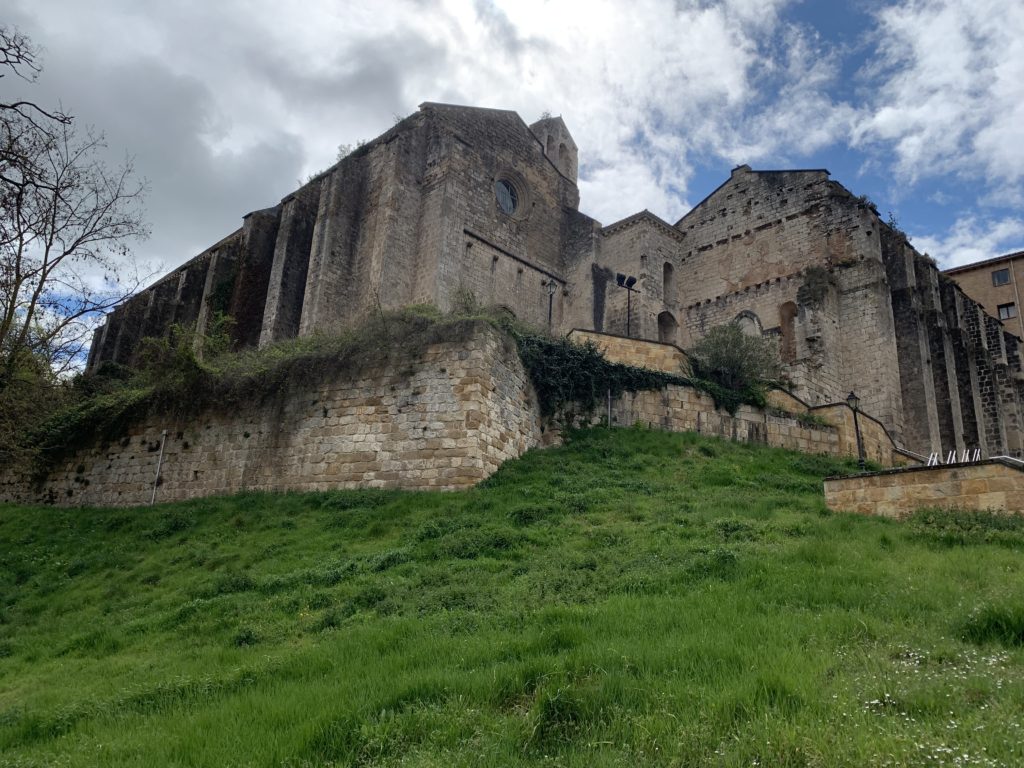
To the left, and facing where the Jewish community would have been, was this big pile, now an old folks home, but originally a Dominican monastery, built in 1258. Those who study relations between Christians and Jews in Spain know that in the thirteenth century, Dominicans, the “Order of Preachers,” gained the right to be able to force Jews to listen to them preach. In this community, evidently they also taught Arabic. I have read about this and known about it for years; in Estella for the first time I could feel what it would have been like to have this Dominican presence imposed on your community.
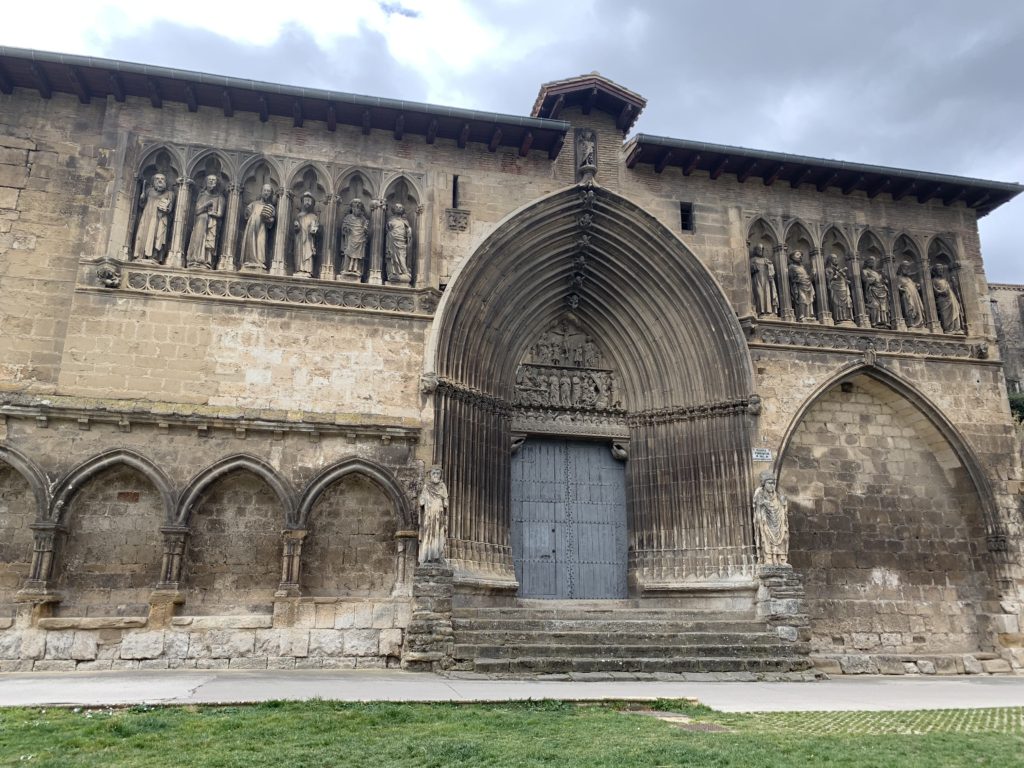
This church has been locked since the late nineteenth century so all you can see is its facade. It sits right on the pilgrimage road into town, opposite the river. It is the church of the Holy Sepulchre, and it was originally built on the site where the Jew was supposed to have thrown the crucifix into the river. This facade dates from the fourteenth century, but as you’ll be able to see, its creators had their minds very firmly on the Jewish community that surrounded it even then.
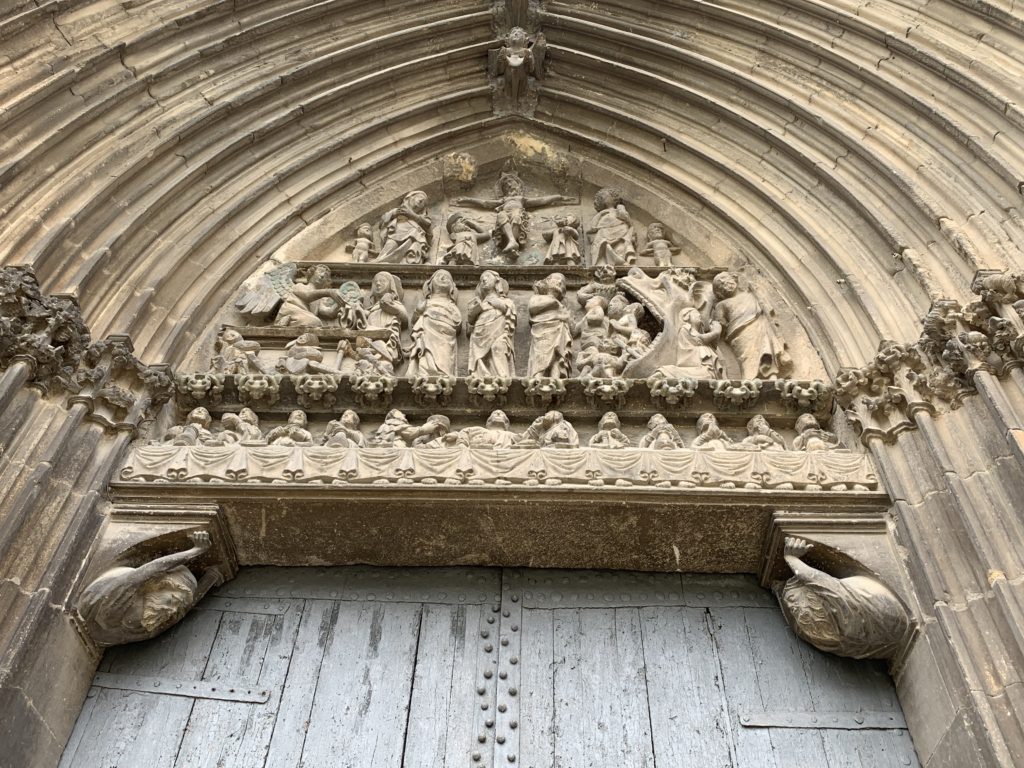
The tympanum at the centre shows scenes from Holy Week — the Last Supper on the bottom; the Crucifixion at the top, the cross flanked by Mary and John; and in the middle, the harrowing of Hell, the women at the tomb, and Christ appearing before Mary Magdalene. But look at the figures holding up the tympanum.
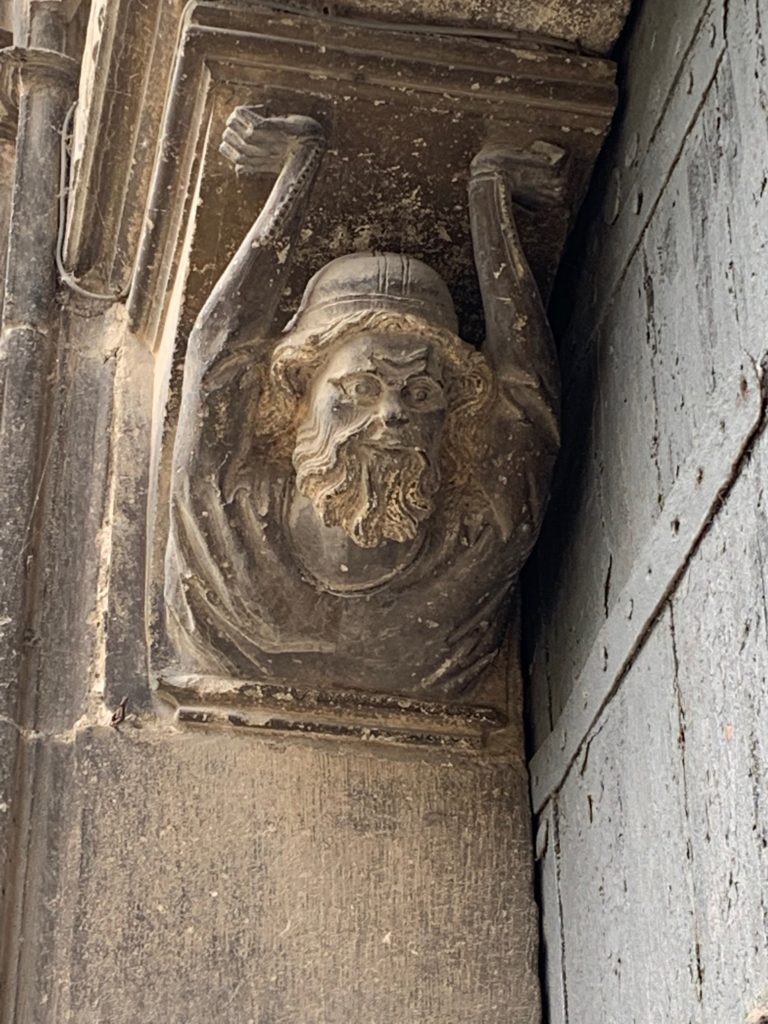
They’re Jews. It’s a disquieting image and there are many ways to interpret the two figures. They hold up the Crucifixion and Resurrection the way what Christians call the Old Testament holds up the New. Perhaps Jewish taxes paid for the church — given the location of the church this would not be surprising. It may not even be an entirely negative depiction. At a time when Jews were increasingly being marginalized in Spain, their physical presence here makes a case for them to have a place, however fraught and marginalized, in Christendom.
Estella has had a troubling and difficult history, only a small part of which I have talked about here. It is also beautiful, only a small part of which I have shown you here.
